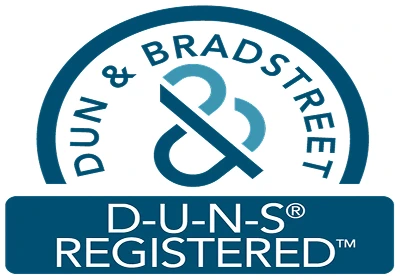Bulk Chemicals Published Insights
Published Date : 01 Jan, 2026
These dyes are commonly used in various industries, such as plastics, inks, and textiles, to impart a red color to the products. The solubility of solvent red dyes in organic solvents makes them particularly suitable for applications where water-based dyes are not fea... View more
Published Date : 01 Jan, 2026
The term "ethanol derivatives” includes a variety of goods that are derived from ethanol, a biodegradable alcohol that is often produced from biomass sources like corn, sugarcane, or cellulosic feed stocks. A variety of goods utilized in the fuel, pharmaceutical... View more
Published Date : 01 Jan, 2026
Crucibles are the vessels that are used to melt and cast metal alloys. These are designed to withstand extremely high temperatures, and are highly resistant to thermal shock. Graphite is commonly used in pencils, steel furnaces, refractory production, brake linings, a... View more
Published Date : 01 Jan, 2026
Cyclopropanol is a three-membered cyclic alcohol known for its distinctive strained ring structure. With its reactivity and stability challenges, it serves as a valuable building block in organic synthesis and medical chemistry. The strained cyclopropanol ring offers ... View more
Published Date : 01 Jan, 2026
Cryptoxanthin is a captivating and valuable carotenoid pigment found abundantly in various fruits and vegetables, captivating the attention of researchers and health enthusiasts alike. As a natural provitamin A compound, cryptoxanthin exhibits potent antioxidant prope... View more
Published Date : 01 Jan, 2026
Environmental silica which is commonly known as silicon dioxide (SiO2), plays a pivotal role in shaping our natural surroundings. This abundant compound exists in various forms, from crystalline structures, like quartz to amorphous particles, found in soils and sedime... View more
Published Date : 01 Jan, 2026
Textiles are flexible materials formed by various processes such as knitting, weaving, crocheting, or felting. Textile materials are used to produce a wide range of finished goods such as kitchen, transportation, bedding, upholstery, construction, medical, protective ... View more
Published Date : 01 Jan, 2026
A water treatment device is an electro-mechanical device to purify water of certain contaminants that are harmful to health. In simple terms, a water treatment device is a machine that transforms impure water into potable water by filtering it through a complex series... View more
Published Date : 01 Jan, 2026
Brassylic acid, also coined as tridecanedioic acid is an alpha, omega dicarboxylic acid which is substituted by more than one carboxylic acid group. It is derived from erucic acid, found in the brassica family of plants such as rapeseed, crambe, and mustard among othe... View more
Published Date : 01 Jan, 2026
Methyl & ethyl chloroacetate are halogenated esters that is used as solvents in organic synthesis, and in preparation of various compounds. These are also used as intermediates in the production of pesticides and herbicides in the agriculture industry, and for man... View more
Published Date : 01 Jan, 2026
Ethylene is a hydrocarbon, which exists in the form of colorless flammable gas and has a faint sweet and musky odor when pure. Ethylene is used extensively in the chemical industry. Ethylene is also a natural plant hormone, and is used in the agriculture sector for ri... View more
Published Date : 01 Jan, 2026
Nitric acid is one of the important raw material that is used in the production of ammonium nitrate (AN) as well as calcium ammonium nitrate, and is used in the manufacturing of fertilizers. Nitric acid is also used in manufacturing of nitrobenzene, which is further u... View more
Published Date : 01 Jan, 2026
Chloroacetyl chloride is a light-yellowish-colored organic compound derived from the chlorination process of acetyl chloride with strong aliphatic acids. It is highly corrosive & toxic and tends to release fumes with a pungent odor when exposed to moist air. Chlor... View more
Published Date : 01 Jan, 2026
Industrial gases are produced for industrial use to increase productivity and improve operational flexibility. Some of the industrial gases are oxygen, nitrogen, argon, helium, and hydrogen. Industrial gases play a crucial role in brazing, food processing, cutting, treating metals, refining, and ... View more
Published Date : 01 Jan, 2026
Internal olefins are predominantly linear however, may contain small amount of branched material as impurities. Growing environmental concerns related to the impact of fluids on aquaculture is driving growth of internal olefins market. Key players operating in petrole... View more
Published Date : 01 Jan, 2026
Soy oil or soybean oil is a vegetable oil extracted from the seeds of the soybean. Palm oil is an edible vegetable oil derived from the reddish pulp of the fruit of the oil palms. The food industry is the major consumer of soy oil. Apart from the food industry, soy oi... View more
Published Date : 01 Jan, 2026
N-Methyl Diethanolamine (MDEA) is an organic compound that is a colorless liquid and has an ammonia odor. N-Methyl Diethanolamine is widely used as a sweetening agent in oil refineries, natural gas and syngas, and chemical production. The applications of MDEA include ... View more
Published Date : 01 Jan, 2026
Magnesium is a naturally occurring mineral that is essential for the effective functioning of different body systems. Magnesium hydroxide is the precipitation of magnesium salts with potassium, sodium or ammonium hydroxide. Magnesium hydroxide has a milk like appearan... View more





